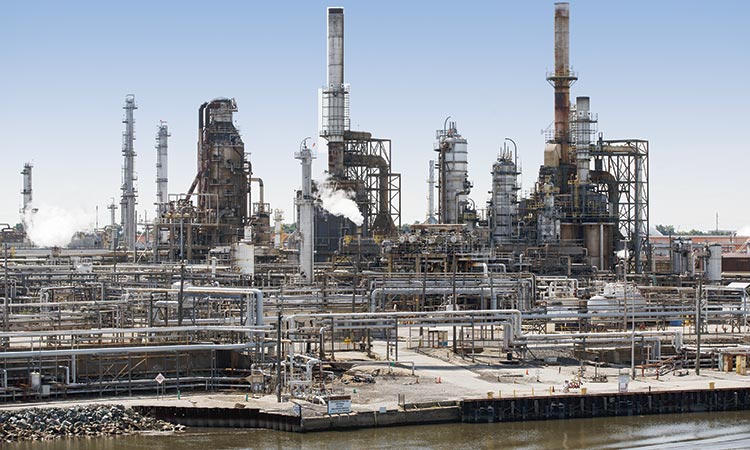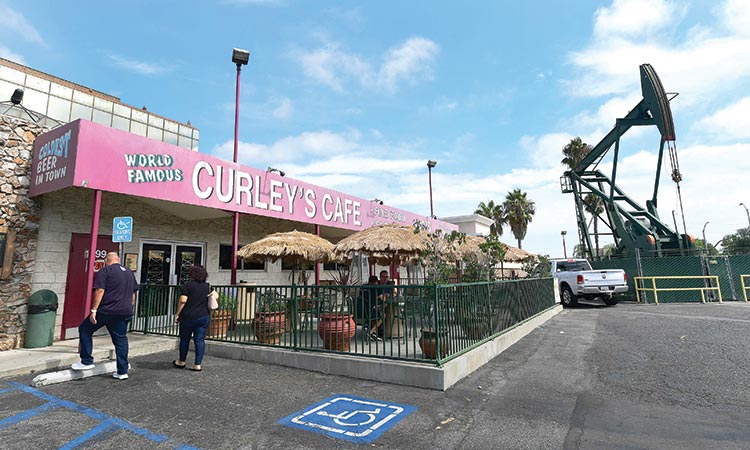US refineries for sale; buyers back out as future seems bleak

Philadelphia Energy Solutions Refining Complex in US. Associated Press
With the news that Royal Dutch Shell is looking to unload its Anacortes, Washington, facility, there are seven different US refineries on the block now, accounting for about 5% of US crude oil processing capacity.
Philadelphia Energy Solutions put its 335,000-bpd refinery up for sale as part of a bankruptcy proceeding, and is expected to review bids in an auction next week. However, only one bidder has said it plans to revive refinery operations at the site, which shut last year after a fire.
Even with US energy production at an all-time record, these properties, located from Washington state to Pennsylvania, are having trouble finding bidders because of unfavourable locales, worries about falling margins, and the coming restart of nearby facilities in the Caribbean that will add to competition, bankers and analysts said.
Just one US refinery transaction closed last year: Chevron Corporation’s purchase of a Houston-area plant from Petrobras.
Prior to that, a flurry of corporate mergers saw independent refiners Alon, Western and Tesoro acquired by rivals. The consolidation left some acquirers, like Marathon Petroleum, with limited appetite or ability to consolidate the sector further.
“When some of your really big companies have stopped buying refineries, that really slows things down,” said Matthew Blair, head of refiners equity research at Tudor Pickering Holt & Co.
In addition, new international shipping fuel regulations, known as IMO 2020, and the US renewable fuels standard that requires refineries to blend biofuels into their gasoline pool, has proved a deterrent, as both are seen as potentially detrimental for refining margins.
Last week, Exxon Mobil Corp said fourth-quarter results would decline from the year-earlier period, citing weak margins in refining and chemicals.
“Refiners don’t want to get overleveraged if they’re on the downside of the cycle where margins are eroding,” said Matt Flanagan, downstream energy practice director at Opportune, based in Houston.
PBF Energy Inc announced plans to buy a San Francisco-area refinery from Shell in June, but that transaction has still not closed as expected. The company was not immediately available to comment.
CVR Energy, which operates two refineries, said in an October conference call that it failed to find a buyer for the company due to valuation disagreements.
East Coast assets have proven particularly tough to unload, as they lack both the scale of US Gulf facilities and access to US crude production. They also face competition from two shuttered Caribbean plants due to restart in coming months that have easier access to overseas crude and more flexible fuel distribution systems.
Delta Airlines retained bankers to help sell its Trainer, Pennsylvania refinery almost a year ago, but has not found a buyer.
Exxon Mobil’s Billings, Montana refinery, which has access to local crude and logistics systems, may not sell if a buyer is unwilling to pay a premium for the plant, people familiar with the process said.
Beyond market risk, potential buyers must contend with environmental risk due to liability, and the possibility of high-profile disasters like last year’s blaze at Philadelphia Energy Solutions.
“Refiners don’t want to overpay for an asset with environmental liabilities that might require unknown capital expenditure to meet future requirements,” Flanagan said.
Meanwhile, US manufacturers and freight hauliers were hit last year by the sharpest slowdown since the 2008/09 recession and it filtered through into a noticeable dip in energy consumption.
Use of electricity, natural gas and diesel by industrial customers all showed large declines, or at least sharp slowdowns, in the nine months ending in September 2019.
In July to September, industrial users’ total energy consumption fell 1% compared with the same period a year earlier, according to statistics from the US Energy Information Administration.
That was the biggest decline since the mid-cycle manufacturing slowdown in 2015/16 and before that the recession of 2008/09.
Within the total, industrial consumers’ electricity consumption fell by almost 5% in the third quarter from a year earlier, easily the biggest decline since the recession.
Power consumption exhibits a lot of short-term variability based on both the weather (which affects heating and cooling demand) and the state of the economy, so the data must be interpreted with care.
Reuters







